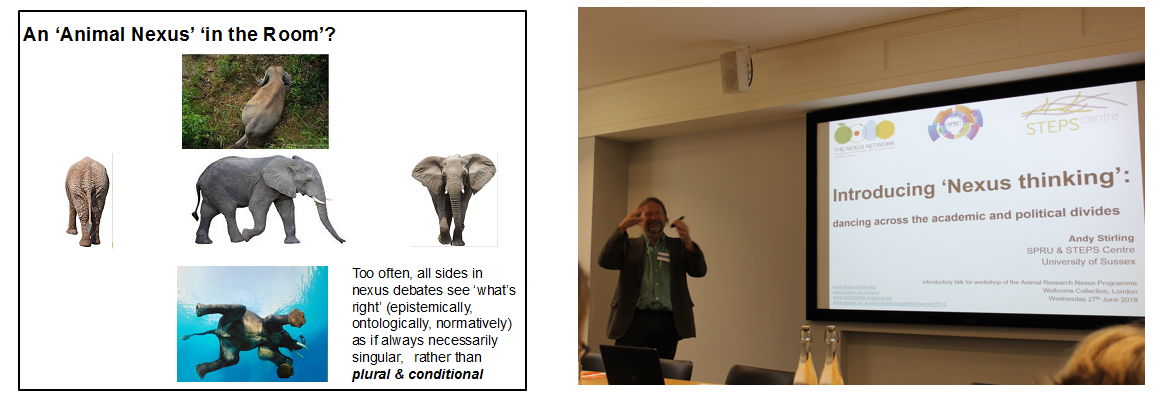A safe space for talking about the future of laboratory animal lives
A safe space for talking about the future of laboratory animal lives
At the start of this project we stated one of our key objectives was to generate new cultures of communication across science, health and animal welfare, which would shape the future of animal research in the UK. This is a big promise, so it was not without trepidation that we gathered on the evening of the 26th June at the Wellcome Collection to mount our posters and finalise presentations for our opening stakeholder workshop. Yet at the same time the excitement in the air was palpable. This is, at the end of the day, what AnNex is all about, using the approaches and methods from the social sciences and humanities to create a safe space for conversations about animal research for all stakeholders, be they scientists, researchers, academics, funders, animal care staff, NGOs, charities or campaign groups.

So the following morning, fuelled by some rather excellent Wellcome refreshments, we gathered in the Frank-Steel room for a plenary talk from Prof Andy Stirling who – we hoped - could explain the promises and pitfalls of Nexus Thinking for the kinds of work we wanted to do. Using an intriguing combination of diagrams and photos of elephants, Andy insightfully drew out some key lessons from his experience of working with Nexus, encouraging us to think about its ability to enable thinking across and outside of established positions, disciplines and forms of expertise, to navigate between instrumental and critical approaches to animal research, to question who has the power to speak in debates about laboratory animals lives, and to recognise when to open up and when to delimit our conversations.

Andy’s talk was followed by a series of presentations from the team which sought to show how we were thinking across projects (and disciplines) to raise new questions about animal research. Gail provided an overview of the project and our ‘nexus thinking’. The teams from projects 1 (histories) and 4 (professional roles) explored how history can render the present strange, thereby highlighting the complex and contradictory position of Named Veterinary Surgeons (NVS) in animal research facilities. Projects 2 (species and spaces) and 5 (patient engagements) considered how the Culture of Care can mean very different things depending on who is doing the caring, who is being cared for and where the act of caring takes place. Why does society seem to care more about fluffies than fish? Does bringing patients into the laboratory change the ways in which they think about – and care about – animal research? A final presentation from project 3 (breeding and supply chains) showed how animal journeys can look very different from the perspective of laboratory animal technologists, and how innovative approaches to stakeholder engagement used at a recent IAT Congress workshop (led by Bentley, our creative facilitator) allowed people to speak not only about technical issues and challenges, but about the emotions and values evoked through their involvement in laboratory animal lives. Carrie Friese (Sociology, LSE) then chaired a lively discussion, where we challenged the value of nexus thinking, examined the increasing involvement of patients in the research process, argued for more attention to replacements for animal research, noted absent voices and asked why people seem so unconcerned about the welfare of fish. I am still curious to know if this impacted the take-up of the fish menu option in the subsequent lunch.

The afternoon began with a poster session which reported on work-to-date and initial findings. From the buzz in the room we certainly found a lot to talk about, and the breadth of these discussions was reflected in some thoughtful closing comments from Jane Smith (Boyd Group), Kate Millar (University of Nottingham) and Bella Williams (UAR). Jane encouraged us to think more about the crucial role of AWERBS in driving improvement and innovation in laboratory animal welfare. Bella noted rising concerns about fish husbandry and welfare. Kate challenged us to explore the strengths and limitations of the boundaries, structures and concepts, which shape both our work and the animal research nexus.
As the day came to a close, and we raised a glass of wine to celebrate the official launch of AnNex, I found myself inspired and encouraged by two key observations. Firstly, it is possible to have meaningful, engaged and open conversations across all positions in the debate about animal research, and find points of concern or consensus where we can work together to make a difference to laboratory animal lives. Secondly, there was in the room both faith in the ability of the AnNex Programme to make these conversations happen, and genuine commitment from our friends, collaborators and stakeholders to support us in this shared endeavour.
Finally, I would like to express our gratitude towards our Project Advisory Committee, workshop participants and the Wellcome Trust. Your ongoing support, enthusiasm and willingness to engage with this project are key to making AnNex possible. Thank you.